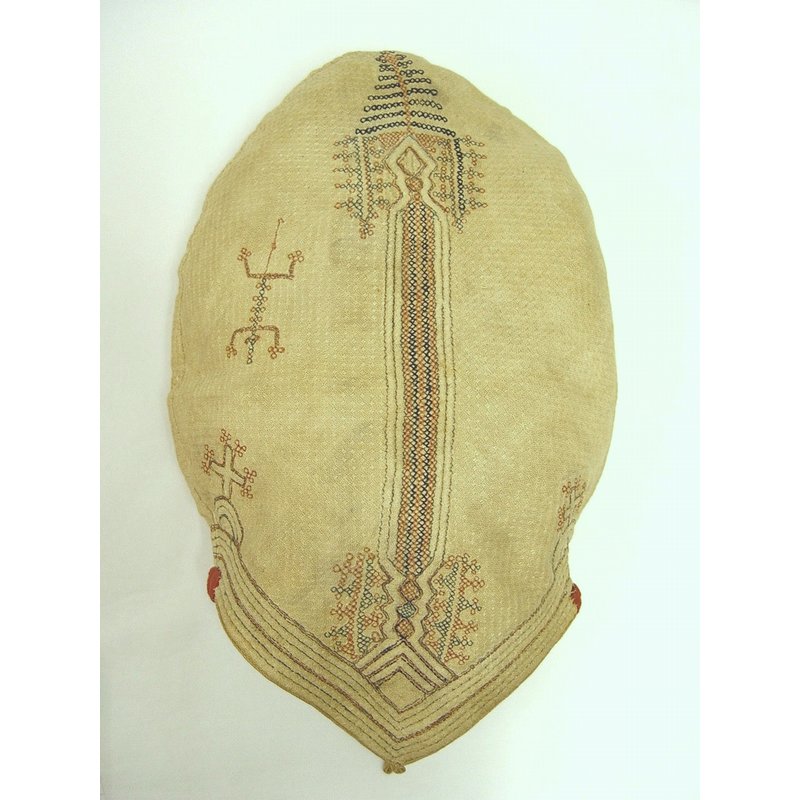Mandingo Gown
A very early Mandingo gown, or Kusaibi gown, with particularly detailed hand-sewn embroidery. This example is made from 18 strips woven cotton, alternating in light and dark indigo-dyed bands. The front of the gown is embellished in red, brown, blue, and white, cotton embroidered geometric patterns; the back has a central panel of stripes and zigzags. The bottom of the gown is fringed by three rows of tassels. Mandingo here, refers to gowns, such as this one, being predominantly worn by Muslim elites. This gown was thought to have been made in Liberia, however, it resembles a gown donated to the British Museum by Thomas Whitfield in 1831 that was singled out as worthy of special mention in various Synopses of the British Museum, between 1832 and the 1850s
Related Videos
Further Information
- Type: Costume, dress, Regalia
- Object: Mandingo Gown
- Materials: Textile
- Culture Group: Mandingo
- Dimensions: 920mm [H] x 1800mm [L]
- Production Date: Pre 1869
- Associated Places: Unknown
- Associated People: Henry Christy
- Museum: British Museum
- Accession Number: BM:Af.2798
Related Objects
Embroidered Cap
Costume, dress
Raffia Hat
Costume, dress
Raffia Hat
Costume, dress
Mandingo Sandal
Costume, dress
Mandingo Sandal
Costume, dress

.jpg)
.jpg)

.jpg)
.jpg)
.jpg)
